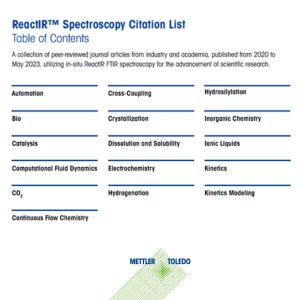Continuous Flow Reaction of a Highly Exothermic Reaction
In this example, inline FTIR technology was employed to analyze a continuous process forming thiomorpholine dioxide through the reaction of ethanolamine (EA) and divinylsulfone (DVS). Inline FTIR played a critical role both during the development of the continuous process and in monitoring the reaction at larger scales.
Small-scale batch testing revealed that this reaction is highly exothermic and may pose challenges when scaled up. Furthermore, divinylsulfone is a toxic alkylating agent, and exposure should be strictly avoided.



















